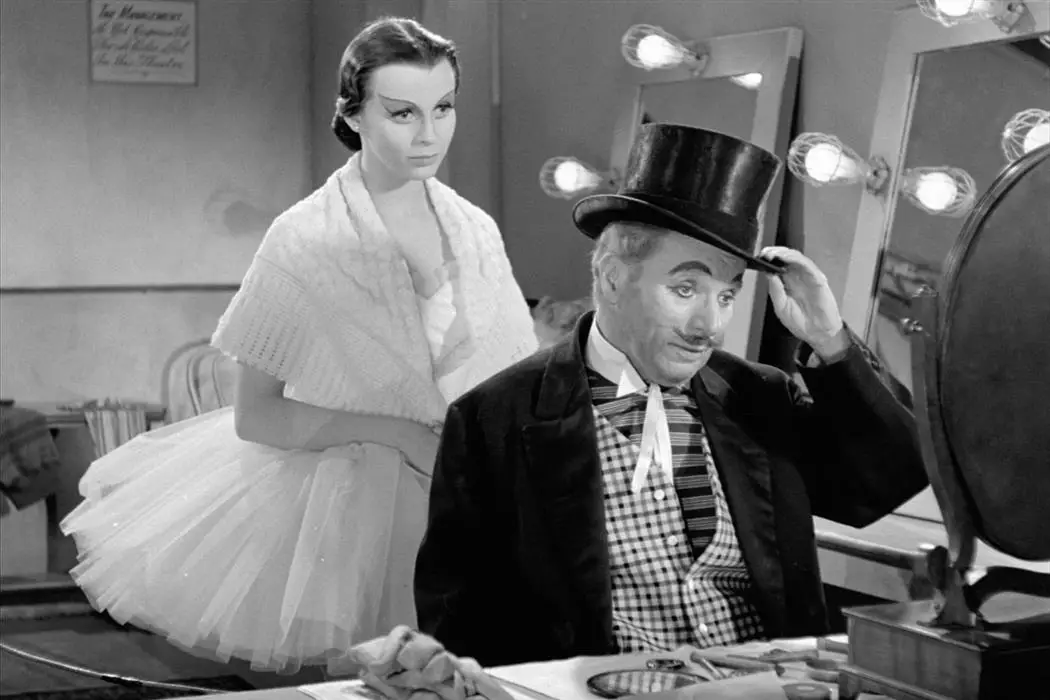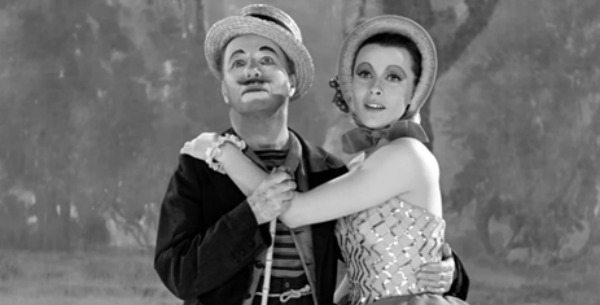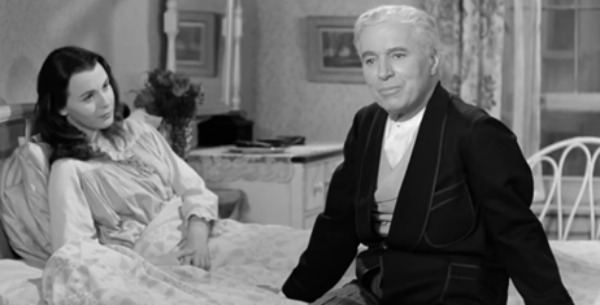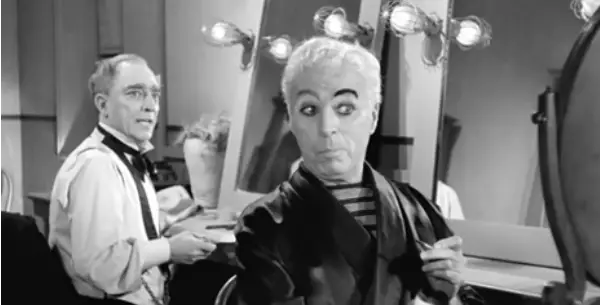LIMELIGHT: Chaplin’s Last Shining Moment In The Spotlight

Tynan loves nagging all his friends to watch classic movies…
With Limelight it quickly becomes evident that Charlie Chaplin was well aware of his own legend—and how couldn’t he be? For years he had been held in the highest regard, loved by the masses worldwide as one of Hollywood’s founding royalty. He was at the center of the universe and the limelight was burning brightly around him.
In fact, I’ve recently been reacquainting myself with Chaplin’s early works, most notably those that paired him with the indelible Edna Purviance, as well as the gargantuan behemoth of a bully Eric Campbell. Comedy shorts such as The Immigrant and Easy Street exhibit some of the qualities that made him so iconically endearing from the outset. It’s hard not to root for him.
But Limelight is a major flash forward in his career, really near the end of it all. By now Chaplin is in his twilight years. In fact, Limelight is one of his last prominent roles, and the feature where he audaciously placed everything in the public eye—a picture that is unequivocally autobiographical in nature, accented with Chaplin’s own romantic dealings and tumultuous history from his entire career up to that point. And yes, he faced scandal in his later years, not simply for his past marital indiscretions, but also more overtly for his political affiliations which unquestionably must have made him an easy target during the supercharged age of McCarthyism.
A Story of a Ballerina and a Clown…
Still, through one final, simple, heartfelt narrative, Charlie Chaplin captured his audience. The title card reads much like his old silents would have in setting the scene. It’s 1914, back in the days when he was probably just making it big in real life. However, as Calvero, Chaplin is a washed-up comedian prone to alcoholism with a career that has suffered dearly. But in a moment of action, he saves an aspiring dancer (Claire Bloom) from an attempted suicide, and from then on becomes a sort of guardian angel for the girl.
Calvero heeds the doctor and allows the girl to stay in his flat, away from the trauma, and although it receives the ire of their landlady, he calls Thereza his wife in order not to cause a local stir. It’s one half human drama, other half stage production, because while he looks to lift her spirits in any manner possible, he daydreams of his past forays in comedy. He was the man who could pull off a whole gag with the pretense of performing fleas, and he had wall to wall crowds back in the day.

But now no one’s there. The seats are empty, the aisles quiet, and he sits with a dazed look in his flat, the only recourse but to go back to bed. It’s as if the poster on the wall reading “Calvero – Tramp Comedian” is paying a bit of homage to his own legend, but also the very reality of his waning, or at the very least, scandalized stardom. It adds insult to injury.
Still, in real life and on celluloid he put up the front of respectability for people. Although Calvero went through five wives and now has a young woman living in his home less than half his age, he believes that after all his years of experience, “a platonic friendship can be sustained on the highest moral plane” as he puts it. And it’s true Calvero is perfectly civil. This isn’t some passionate romance developing, though he does try and call Terry to action in other ways.
Chaplin composed his script of many great lines, monologues, and sonnets where he himself gets to deliver beautiful rhetoric and impassioned rallying cries of truth to anyone who is listening. In this case, it’s the girl who sits despairingly in her bed, but it’s for everyone else too. It’s like he took the substantial speech from The Great Dictator and economized it into smaller bite-sized pieces, with observations such as, “That’s the problem with the world. We all despise ourselves” and “There’s something just as inevitable as death. Life! Life! Life!”
A Wistful Autobiography
But there is something rather tragically demoralizing about watching crowds walk out on Chaplin even if it’s his fictional alter ego, because you get the sense that his once faithful viewing public undoubtedly did the same thing—driven by the tides of the times and their own fickle ways.

But even as his fictional self fades, he watches Thereza ascend to the top of the dancing world as a prima ballerina, and she looks to take her beloved Calvero along with her. There’s a necessity in life to never subsist, never cease fighting. That’s what she learns from him and takes to heart. So the second half of the narrative is really the role reversal. He began as her good Samaritan, and now in her bounty, she looks to take care of him, going so far as professing her love for him and desiring to get married.
It’s important to know that he writes off such an assertion as nonsense and one can question whether this is Chaplin’s chance at revisionist history or more so an affirmation of his life’s actual trajectory—working through his current reality that the world questions (i.e.. marrying a woman much younger than himself in Oona O’Neil, whom he nevertheless dearly loved).

It’s ingenious, really, because there’s positively no way not to empathize with him, no matter our position. And Chaplin once more tugs at our heartstrings in a very personal way—pathos overflowing from his performance one last time. He casts himself as the great sacrificial martyr, gracefully stepping down from his post as one of the luminaries of the cinema, his legacy burning brightly in his wake.
Stepping Out of the Limelight
It’s also easy to suspect that the tragedy of The Blue Angel or the madness of The Red Shoes will be displayed for all to see on the center stage in Calvero’s final swan song. In other words, it will reveal itself in due time, but instead, Chaplin allows himself to go out on his own terms since he’s a master of his own fate, at the very least in this film.
He’s reflected on his life and deemed it as about as good as it can be. That’s enough. Whether it’s his earlier marital troubles, the criticisms of the public, or even a real or fabricated feud between himself and Buster Keaton, it is all laid to rest. For one last, brief moment, it’s like old times even as the new age begins and Chaplin relinquishes his crown to the younger generations. His work here is done. He can step out of the limelight to be remembered not for the controversy or the criticisms, but for blessing the world with one of cinema’s most indelible heroes in the Tramp and giving humanity one of the greatest gifts possible: laughter.
Do you know anything about Charlie Chapin’s film career and personal life? What would you conclude about his legacy from what you already know?
Limelight was originally released on October 16th, 1952 in the U.K. It can be purchased for home viewing from the Criterion Collection, as well as streamed on Amazon.
Does content like this matter to you?
Become a Member and support film journalism. Unlock access to all of Film Inquiry`s great articles. Join a community of like-minded readers who are passionate about cinema - get access to our private members Network, give back to independent filmmakers, and more.
Tynan loves nagging all his friends to watch classic movies with him. Follow his frequent musings at Film Inquiry and on his blog 4 Star Films. Soli Deo Gloria.













